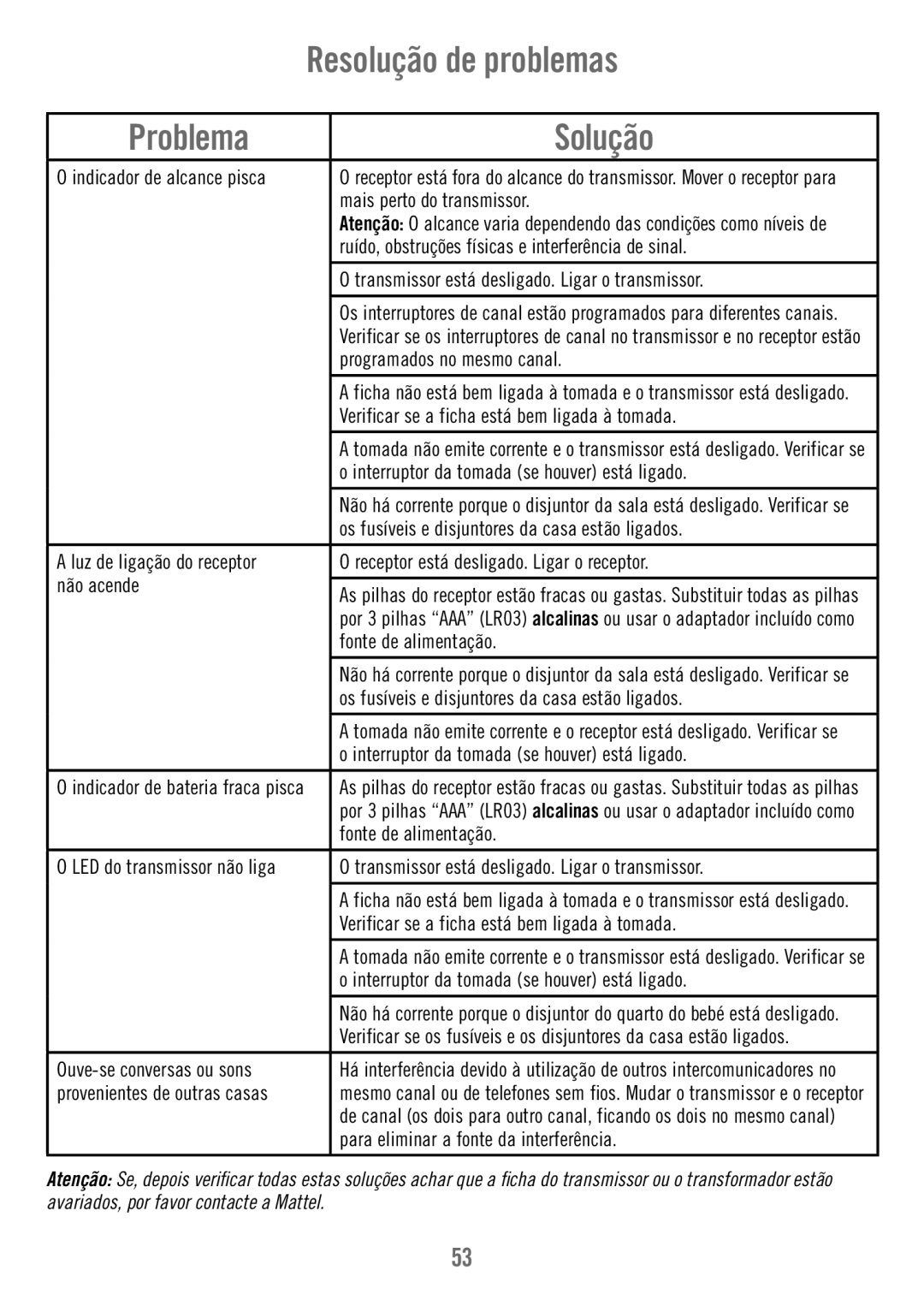V4341 specifications
The Fisher-Price V4341 is a remarkable toy designed to stimulate the curiosity and creativity of young children. As a part of the Fisher-Price brand, known for its commitment to quality and educational play, the V4341 exemplifies how innovative toys can promote early childhood development.One of the standout features of the V4341 is its vibrant design. The toy is crafted with bright, engaging colors that capture the attention of toddlers and preschoolers alike. This visual appeal is not merely aesthetic; it serves an educational purpose by helping children develop their color recognition skills.
This toy incorporates a variety of interactive elements that encourage imaginative play. The V4341 features buttons that trigger sounds, music, and phrases, offering a multisensory experience that not only entertains but also aids in language development. By pressing the buttons, children can engage with different characters and scenarios, fostering storytelling skills and creative thinking.
Another key characteristic of the V4341 is its focus on fine motor skills. The toy includes various movable parts, such as levers, wheels, and openings that encourage children to grasp, push, pull, and manipulate. These actions are critical for developing the dexterity and coordination necessary for later tasks, such as writing and self-feeding.
In terms of safety, Fisher-Price prides itself on adhering to stringent safety standards. The materials used in the V4341 are non-toxic and free from sharp edges, ensuring that children can explore and play without risk of injury. Additionally, the toy is designed for durability, allowing it to withstand the rigors of energetic play typical of young children.
Moreover, the V4341 encourages social interaction. When played with peers or family members, children can share experiences, teach each other what they've discovered, and collaborate in imaginative play scenarios. This social element is vital for developing communication skills and the ability to work with others.
Overall, the Fisher-Price V4341 is a compelling choice for parents seeking a toy that combines fun with developmental benefits. Its combination of bright colors, interactive features, and safe design makes it an ideal companion for children's playtime. Through engaging with the V4341, children can embark on a journey of discovery, learning important skills while having fun.
